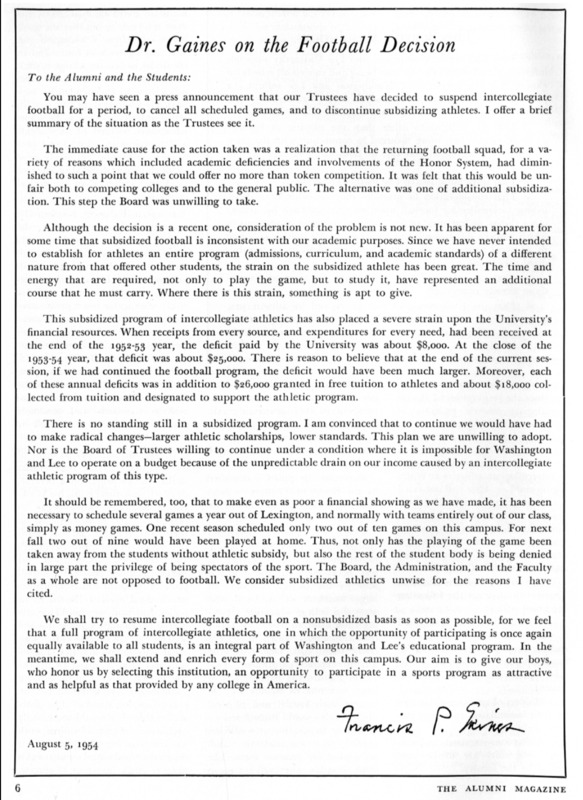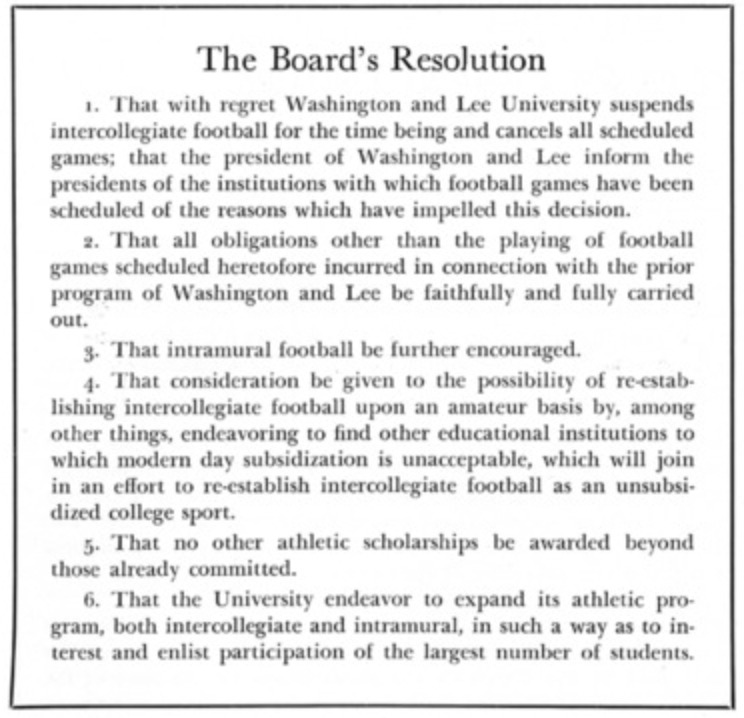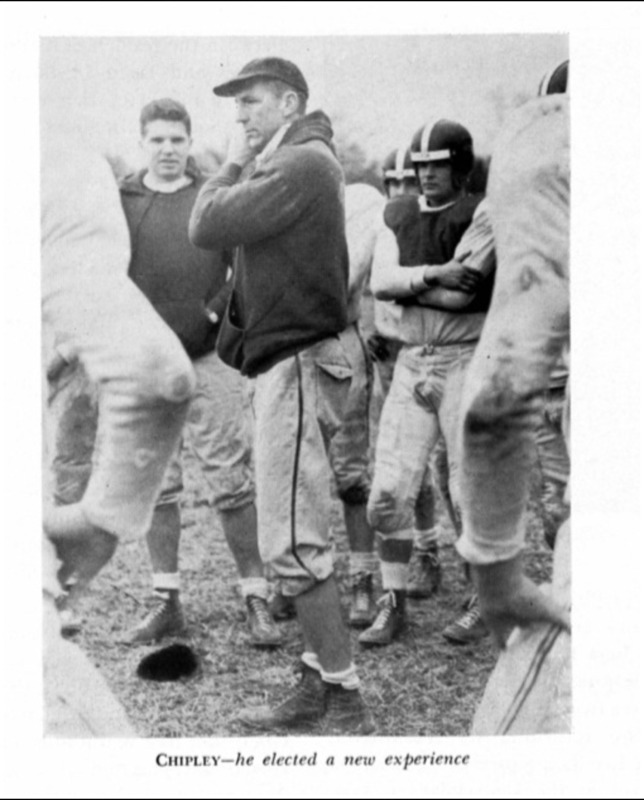The Scandal (1954)
Going into the 1954 season, the Washington and Lee administration, namely Chancellor Francis Gaines, had already contemplated discontinuing subsidized athletics. Despite the team’s successes in the 1951 Gator bowl, the football program continued to siphon funds away from academic initiatives as many the players were receiving financial aid. Furthermore, many of these players fell short of the academic standards of the institution. In 1952, Chancellor Gaines declared that the athletes must “meet the same standards of academic performance and economic need” compared to the rest of the student body. This sentiment even caused the chancellor to reach out to geographically and academically comparable colleges such as Amherst, Davidson, Georgetown, Sewanee, Richmond, UVA, and Princeton to suggest forming an amateur football conference. But, regardless of these trends, prominent alumni aiming to retain D1 football fought the administration’s advances by threatening to remove financial support.
But, in the summer of 1954, a spectacle unfolded that not even influential alumni could contest. On June 1st of 1954, “a visibility shaken William M. Bailey,” then president of the student body, rose before a packed audience in Lee Chapel to present the recent investigation. The hearing uncovered an organized cheating syndicate composed of 14 athletes, 12 of them football players, which actively stole and distributed tests before they were taken by the student population. Their audacious activities included breaking into administrative offices along with bribing watchmen to remain quiet.
These egregious violations posed one of the greatest threats to the university’s honor system in the history of the institution. Gaines described the ordeal as “the most startling and devastating disciple problem in the annals of Washington and Lee.” The expulsion of the perpetrators along with nine other players flunking out delivered the finishing blow to the already undermanned 1954 team. And thus, given the necessary conditions, Gaines officially ended athletic subsidization in a formal resolution (pictured right).
Gaines declared that “It has been apparent for some time...that subsidized football is inconsistent with our academic purpose” combined with it imposing “a severe strain on the University’s financial resources.” This decision was ultimately inevitable as subsidized athletics no longer aligned with W&L’s pursuit of academic excellence. All in all, this decision displayed the true intentions of the institution. When presented with a crossroad, W&L chose to continue the aspiration of producing well-rounded individuals of integrity.
Protests arose from students and alumni alike who wished to continue “big time” football or slightly decrease subsidization to achieve a compromise. In response, the university sought to display a new and positive future in amateur football under the leadership of Head Coach Bill Chipley (pictured left) in 1956.
Brownell, B. A. (2017). Washington and Lee University, 1930-2000: Tradition and transformation. Louisiana State University Press.


